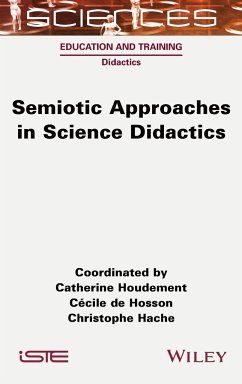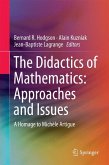The sciences are, in essence, highly semiotized. Our ways of thinking and communicating about science are based on permanent transformations from one system of signs to another, such as scriptural, graphic, symbolic, oral and gestural signs. The semiotic focus studied in this book makes it possible to grasp part of the complexity of teaching and learning phenomena by focusing on the variety of possible interpretations of the signs that circulate within the science classroom. Semiotic Approaches in Science Didactics brings together contributions from didactic research involving various disciplines such as mathematics, chemistry, physics and geography, which mobilize different types of semiotic support. It offers the key to understanding and even reducing some of the misunderstandings that can arise between a speaker and a receiver in scientific teaching situations.
Hinweis: Dieser Artikel kann nur an eine deutsche Lieferadresse ausgeliefert werden.
Hinweis: Dieser Artikel kann nur an eine deutsche Lieferadresse ausgeliefert werden.








